How Seasons Affect Water Availability in Uganda
In Uganda, it’s not the temperature that changes between seasons — it’s the amount of rain. Both the wet and dry seasons present their own unique challenges for Uganda’s people when it comes to the availability of drinking water.
“In Uganda, we have two seasons, i.e., the dry and wet seasons,” said Enock Obwon, WASH Programs Manager in Uganda. “The wet season typically occurs from March to May and September to November, while the dry season spans from December to February and June to August.”
In a wealthier country, a citizen might not even know when water is scarce in their area. But in Uganda, where people find their own water, the seasons and their effects on water resources matter much more.
Enock explained: “According to the [most recent] Ministry of Water and Environment sector performance report, only 67% of Ugandans in rural communities have access to clean and safe water, with 85% of [the water points] functional (working at the time of study). Out of these, 95.1% are in compliance with the National Drinking Water Standards. The rural communities in Uganda still lack access to safe water, leaving a big portion of the population still unserved.”
Only a staggering 19% of people in Uganda have access to safe drinking water.
The Wet Season
“Water is generally plentiful during the wet season, which occurs from March to May and between September to November when we experience increased rainfall,” Enock said. “As such, rivers, lakes, and ground aquifers are replenished, contributing to high water availability. Households also engage in rainwater harvesting for daily water needs.”
While the rains bring rain to fill people’s rainwater harvesting containers and recharge groundwater levels, the rain also presents some problems.
Some issues are more straightforward, like water points flooding enough to be unusable and contaminated, like in Kitonozi Community, where both of the available water points suffer (or become entirely unusable) due to rain.
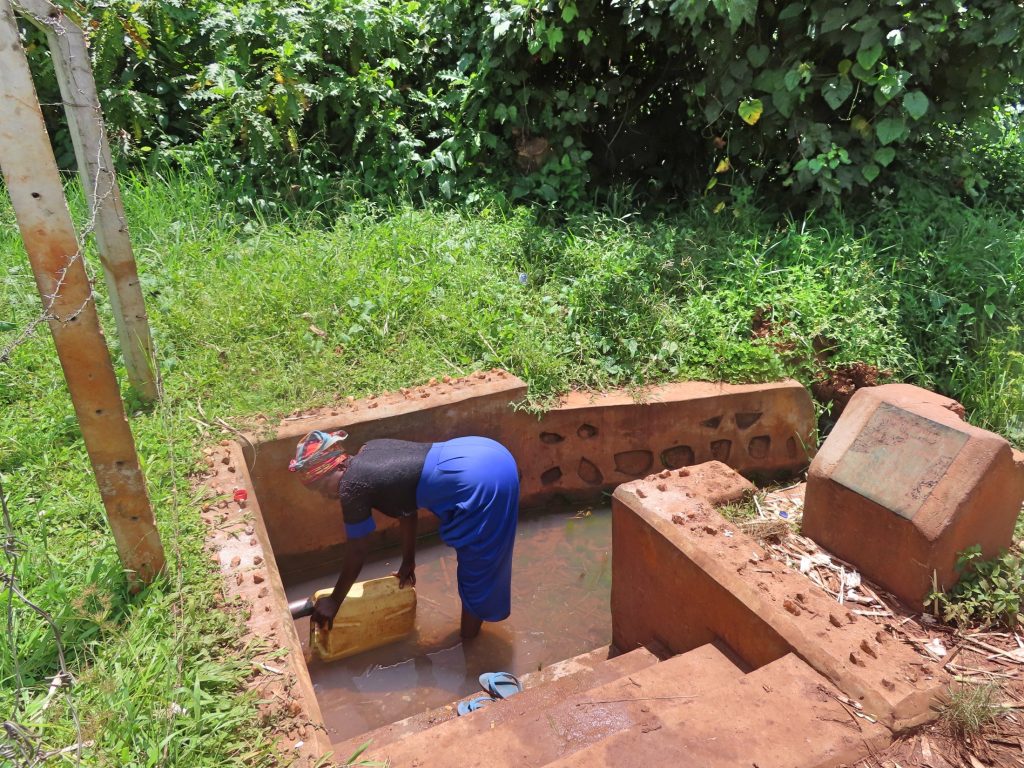
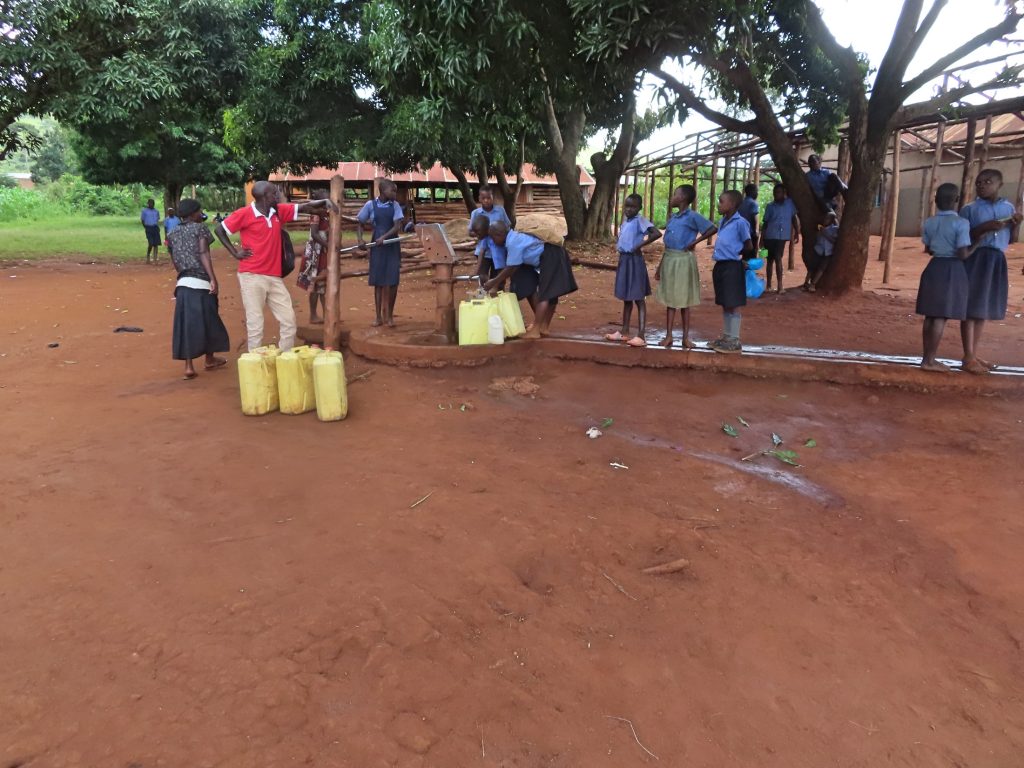
The community’s protected spring, flooded even throughout the dry season due to poor drainage, goes completely underwater during the wet season. And the only other water source, a shallow well shared with a school, suffers the same fate.
“Storm runoff during this season significantly impacts water quality,” Enock said. “Stormwater runoff carries pollutants, such as sediment, nutrients, pesticides, etc., from land into lakes, rivers, and streams. Thus, this can degrade water quality even for ground aquifers.”
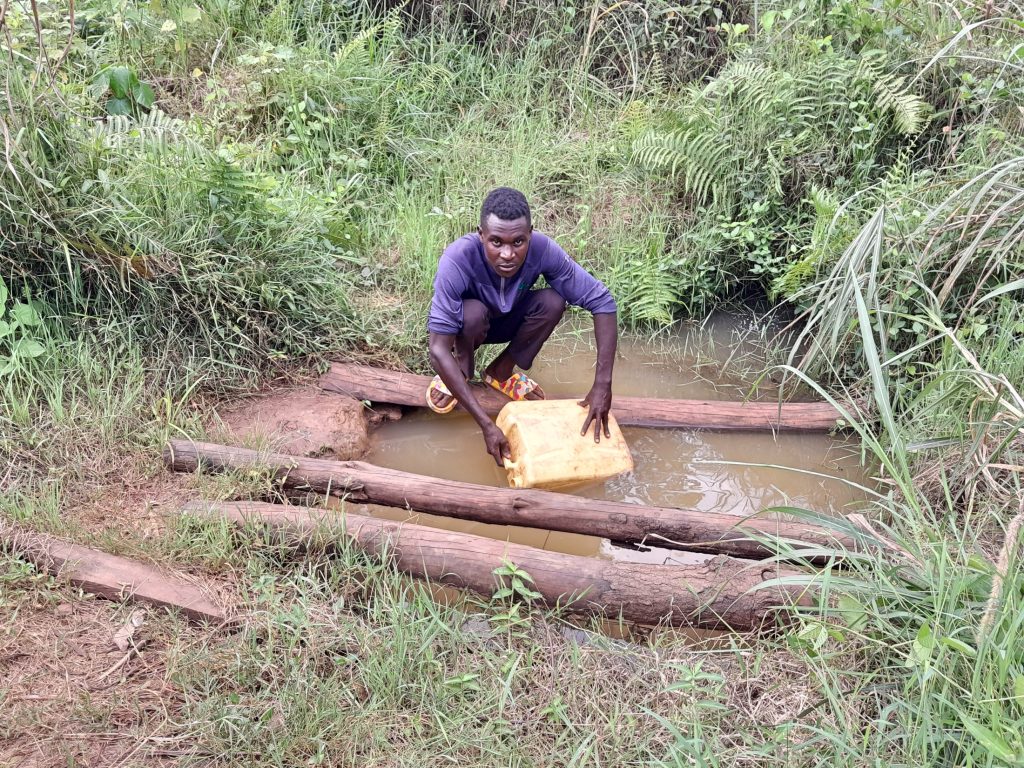
“My primary water source is a scoop hole near my home, but the water is very dirty and unsafe,” said 26-year-old Christopher Abigaba from Kisalizi Community. “I assume that, this source being in a valley, rainwater carries feces [to] the water point. There are people who abandoned this scoop hole because there is someone who defecated in the water source.”
Lower water quality translates to higher cases of water-related diseases, more money spent on treatment and medications, and less time at work or school. But with no other options for water, the people where we work in Uganda must drink whatever water they can find.
The Dry Season
During the dry season, fewer contaminants enter the water sources via rain. But without the rain to bolster water reserves and fill household rain collection containers, there is less water to satisfy the same population. Long queues form at scant water sources — and in some cases, surface water resources like pools and streams disappear altogether.
“Water scarcity is more common during the dry seasons,” Enock added. “During these months, there is reduced rainfall, which leads to lower water levels in wells, impacting water availability.”
One example of water scarcity due to the dry season is in Okweche Community, where the open hole people collect water from drastically reduces during the dry season, inciting worry and water rationing.
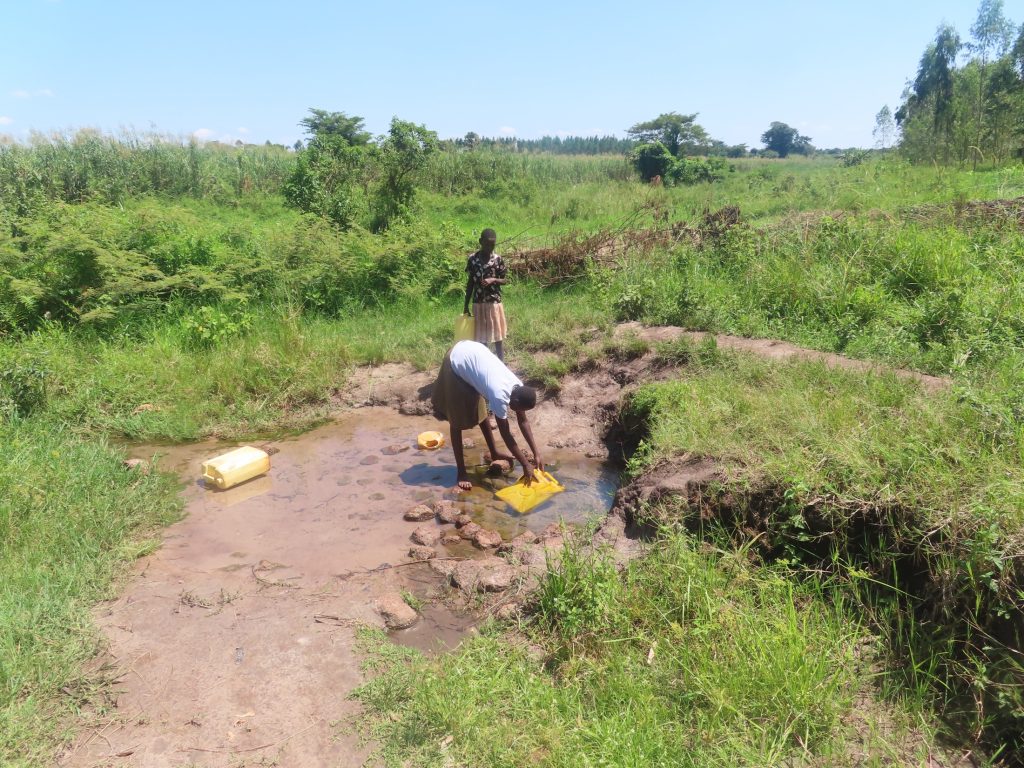
“Our primary water source is the open hole, which is open to contamination,” said Mary, who lives in Okweche. “It is seasonal, sometimes low quality, and [in] a dangerous area, with sometimes visible particles and organisms.”
Enock said: “The dry season brings water scarcity challenges where sometimes our water users are faced with long queues at the available water sources leading to long waiting time and subsequently increasing the time required to access safe water.”
In Kihagani Kyakantu, their water sources used to disappear entirely before we constructed a new borehole well.
“During the dry season, all the dams dry up, and accessing water becomes hard,” explained Winnie Kanyana, a 36-year-old housewife.
The dry season is primarily hard on people — but water point hardware suffers too, creating more problems.
“During the dry season, household water needs are met by the communal water source majorly,” Enock said. “This leads to over-usage of the borehole resulting in wearing out of pump parts such as the bearings, etc. This is evident by the high water point maintenance costs met by communities during dry seasons compared to wet seasons.”
How We Help
To address the issues of water scarcity and availability in Uganda, we drill borehole wells, which reach stable groundwater reserves deep underground. Using this technology foregoes the scarcity of surface water throughout the dry season and secures a steady flow of safe groundwater for drinking — and for washing school uniforms, like Noeline’s from Kyamukudumi.
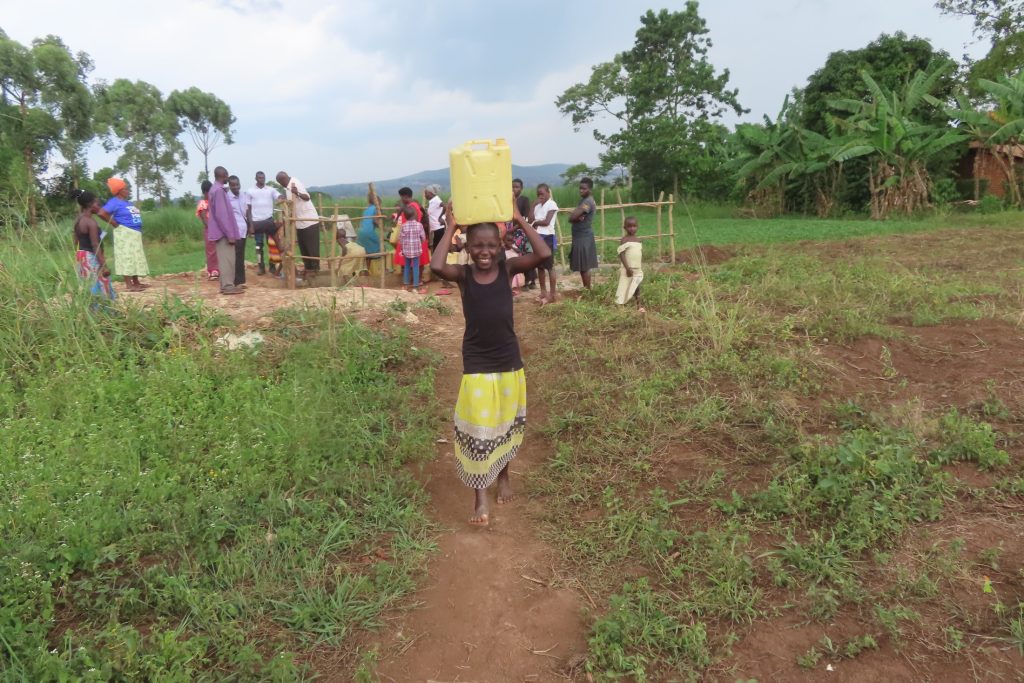
“I will regularly put on clean uniforms for school, including bathing, but also have clean drinking water. No more eating food late and no waking up very early to go collect water before going to school,” said 10-year-old Noeline.
As we install more and more reliable water sources in this area, the lines at each water source will reduce. This means collecting water will be faster and easier for everyone, a key component for reducing rates of water-related illnesses. More water sources will also mean fewer people per water point, which will reduce the strain on each well.
These stories from communities across Uganda illuminate the stark realities faced daily in accessing clean and safe water. From the flooded water points in Kitonozi Community to the contaminated open hole in Okweche, providing water in Uganda is a constant battle against nature’s elements.
Our efforts in Uganda have already shown promising results, transforming the lives of many. The joy and relief that come with accessing clean water, as seen in the smile of 10-year-old Noeline, motivate us to expand our reach and impact. Securing safe water through borehole wells mitigates the effects of seasonal changes on water availability and contributes to healthier communities, improved education outcomes, and enhanced quality of life.
Each donation brings us one step closer to ensuring that no child has to wake up early to collect water before school, no community has to ration their water use during the dry season, and no water point suffers from overuse and rapid wear and tear.
By contributing to The Water Project, you invest in a future where every person in Uganda has access to the clean and safe water they deserve, regardless of the season. Together, we can make a lasting difference in the lives of Ugandan communities, providing them with the resources they need to thrive.
Home More Like ThisTweet